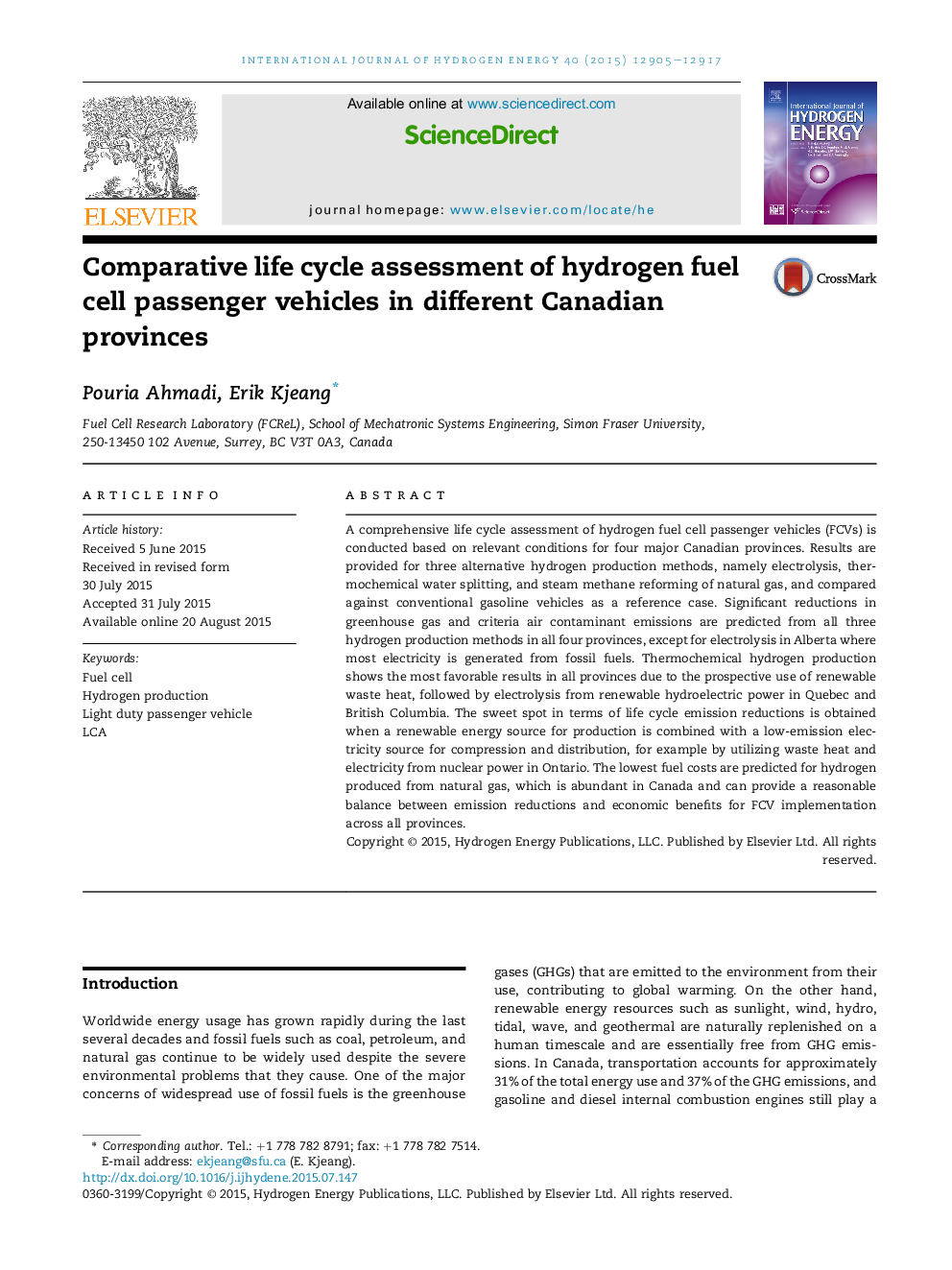| Article ID | Journal | Published Year | Pages | File Type |
|---|---|---|---|---|
| 1269208 | International Journal of Hydrogen Energy | 2015 | 13 Pages |
•Hydrogen fuel cell vehicles are assessed relative to gasoline vehicles in Canada.•Deep GHG emission reductions are possible with various hydrogen production methods.•The lowest overall emissions is for thermochemical hydrogen production in Ontario.•Hydrogen from abundant domestic natural gas is a promising low-cost alternative.•Guidelines for fuel cell vehicle implementation in Canada are provided.
A comprehensive life cycle assessment of hydrogen fuel cell passenger vehicles (FCVs) is conducted based on relevant conditions for four major Canadian provinces. Results are provided for three alternative hydrogen production methods, namely electrolysis, thermochemical water splitting, and steam methane reforming of natural gas, and compared against conventional gasoline vehicles as a reference case. Significant reductions in greenhouse gas and criteria air contaminant emissions are predicted from all three hydrogen production methods in all four provinces, except for electrolysis in Alberta where most electricity is generated from fossil fuels. Thermochemical hydrogen production shows the most favorable results in all provinces due to the prospective use of renewable waste heat, followed by electrolysis from renewable hydroelectric power in Quebec and British Columbia. The sweet spot in terms of life cycle emission reductions is obtained when a renewable energy source for production is combined with a low-emission electricity source for compression and distribution, for example by utilizing waste heat and electricity from nuclear power in Ontario. The lowest fuel costs are predicted for hydrogen produced from natural gas, which is abundant in Canada and can provide a reasonable balance between emission reductions and economic benefits for FCV implementation across all provinces.
